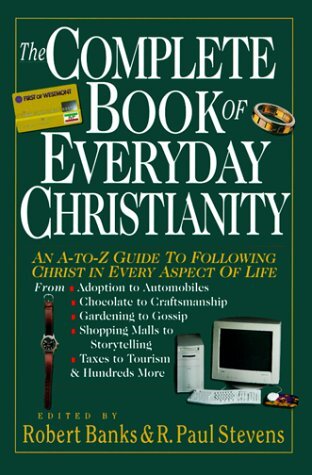Beauty
Book / Produced by partner of TOW
Often when we’re standing before a breathtaking sunset or after we’ve heard the final notes of a great symphony, the word beautiful springs naturally to our lips. What exactly do we mean by this, and what is the place of beauty in our lives as Christians? Some would argue that our discipleship should be difficult and we should not seek ease or beauty, while others believe that beauty is a snare that can lead us away from God (see Art). Yet most Christians sense in their hearts that beauty—especially seen in creation—is somehow a gift from God, and that we should enjoy this gift in ways that honor God. Where did our ideas of beauty come from, and how can we think about this in God-honoring ways?
The Earliest Ideas of Beauty
Most of our ideas about beauty, at least in Europe and America, have been formed under the influence of Greek philosophy. In the field called aesthetics beauty was, at least before the eighteenth century, the dominant idea, more central even than consideration of what we call today art. As this was first expressed in the work of Plato (especially in his dialogue Philebus), beauty is a property of particular objects—specifically ordered in a balanced way with an internal unity—that can be known by the mind. In Plato’s view this order is a reflection of a reality existing independently of our knowledge, whether or not the order is precisely comprehensible. Plotinus, a follower of Plato, included a spiritual dimension in beauty, defining it as that which “irradiates symmetry rather than symmetry itself” (Enneads, 7) and so moves us. This added the important idea that beauty involves the whole of the object or event and so cannot be defined only by reference to particular qualities.
Modern ideas of beauty did not come to expression until the eighteenth century. There, as a result of the empiricism of John Locke, beauty was described not as something inherent in the object but as an experience of the observer. Since it was understood as a subjective (rather than objective) quality, the way was open to include ideas like “sublime” (that which arouses amazement or even horror). Beauty no longer played the central role in aesthetics, and it took its place alongside other aesthetic qualities. Art objects that were successful were no longer required to be beautiful in any traditional sense but could move viewers by their ugliness or simply the power of their imagery. It is this development in what we call modern art that leaves many Christians (and many non-Christians for that matter) puzzled and unsure about the role of art and beauty in their lives.
A Biblical Approach to Beauty
What does beauty mean in the Bible? Can we find there some help in sorting out this modern difficulty? In the Old Testament there are as many as seven different word groups that refer to events and objects that are beautiful or splendid. What strikes one at once is that these words almost never refer to separate experiences that we might call “aesthetic experiences” in the modern sense. Rather, various facets of Israel’s life are termed beautiful. In people and nations beauty often is associated with what is honorable or what sparks admiration: “Babylon [is] the jewel [beauty] of kingdoms” (Isaiah 13:19 RSV). There is a word for splendor that is used of the beautiful robes of the priests (Exodus 28:2) and is associated with the pomp and display of the king (Esther 1:4) or even with God’s acts of deliverance (Isaiah 63:12). This beauty God strips from his people during the exile (Psalm 78:61), though it will characterize them again in the last days (Jeremiah 33:9).
Other words refer to “delight” or “desire” and speak of the attraction of beauty and often the greed or lust that beautiful things can inspire in us, just as Achan coveted gold (Joshua 7:21). Or beauty can be simply what is fitting, in the sense of suitable to the situation. For example, a word for beauty describes an old man’s gray head (Proverbs 16:31) and a young man’s strength (Proverbs 20:29). In this sense praise “suits” the righteous (Psalm 33:1), the feet of the evangelist are “lovely” (Isaiah 52:7), words spoken appropriately are “seemly” or “lovely” (Proverbs 16:24), as is bread eaten in secret (Proverbs 9:17). This last reference underlines the fact that aesthetics and ethical qualities are inevitably interrelated; the Bible knows nothing of beauty that is not integrated into the larger purposes of God for his people.
This integration of beauty into the whole of life and its (ultimately) moral purposes is seen clearly in the virtual absence of the idea of ugliness from the Bible. The nearest equivalent is the notion of a blemish or defect, which can be physical or moral (see Pollution). A blemish is what keeps anything from being what God intended it to be. This integration of the aesthetic, the ethical and the religious can be seen most clearly in the application of words related to beauty to God’s presence in Zion or Jerusalem (Psalm 50:2), the place or experience of worship (Psalm 93:5; compare “Holiness is the beauty of thy house” NEB), and especially to God’s people when in the last days they dwell with him and reflect his character (Isaiah 44:23; compare RSV and Isaiah 46:13; Psalm 16:11; Rev. 21:24). These last verses imply that the very process of redemption, focusing on the death and resurrection of Jesus, has as a part of its purpose a restoration of the integrity of the created order wherein it will again be characterized by beauty and wholeness.
So while we are not encouraged to seek beauty for its own sake, it is clear from Scripture that obedience to God and God’s Word leads to a life which is meant to display beauty as well as goodness. Good works (the Greek word used in the New Testament can also mean “beautiful works”) are to characterize our lives so that people will glorify the Father who is in heaven (Matthew 5:16). It is in this context that we may understand Paul’s advice to the Philippians: “If anything is excellent or praiseworthy—think about such things” (Phil. 4:8).
A Christian Perspective on Beauty
This biblical material gives us a perspective in which we can understand modern subjective notions of beauty. We might put this in terms of three comments.
First, it is clear that God’s purposes for the Christian embrace the entirety of our existence. Just as our lives should show the righteousness of God’s character, they also ought to reflect God’s beauty. Our brief study makes it clear that this is meant to be in and through our ordinary world of work and play. While experiences of art in concert halls and museums may play a part in our “training in righteousness,” their impact is to be felt in how we dress, the way we decorate our home (see Adornment), even (or especially) in how we treat one another from day to day (see Love). As Calvin Seerveld says, for example, in his treatment of the calling of beauticians: “Not every person can be ‘beautiful’—whatever that means; but everyone has the capacity, even duty, to be groomed, and that includes aesthetic enhancement as well as hygienic care” (p. 28). All of these dimensions of life can certainly be characterized as lovely or beautiful if they are done in sensitive and God-honoring ways, because God made the world to show his glory and redemption, and we are to retrieve some of that splendor.
Second, the Bible makes it clear that beauty, for the believer, focuses ultimately on our experiences of corporate worship and especially on our life with God. It is for this reason that Christians through the centuries have built beautiful buildings (see Church Buildings), painted altarpieces and composed chorales (see Music, Christian) both as expressions of their faith and as symbols of God’s own glory. Paul’s advice about making our worship orderly (and decent) when placed in the larger biblical context implies that our church and community life ought to reflect what the Bible calls the “beauty of holiness.”
And third, we must remember that our life together, even as believers, is still “defective.” As John puts this in his letter to the early church, though we are already God’s children, it does not yet appear what we shall be. We only know we will be like God (1 John 3:2). For this reason we are not surprised at the ugliness that our sin causes, though we are often made to suffer because of it. But at the same time we can take the moments of joy and beauty that God gives us as an anticipation of what life will be like when God wipes away every tear from our eyes. It is for this reason that beauty, while not as important to the Christian as faith, hope or love, can be a bearer of all these gifts and thus help draw people to worship the Lord.
References and Resources
M. Beardsley, Aesthetics: Problems in the Philosophy of Criticism (New York: Harcourt Brace, 1958); W. Dyrness, “Aesthetics in the Old Testament: Beauty in Context,” Journal of the Evangelical Theological Society 28 (December 1985) 421-32; T. Howard, Splendor in the Ordinary (Wheaton, Ill.: Tyndale, 1976); H. R. Rookmaaker, The Creative Gift: Essays on Art and the Christian Life (Westchester, Ill.: Crossway, 1981); E. Schaeffer, Hidden Art (London: Norfolk Press, 1971); C. Seerveld, “Beauty and the Human Body: Reflections on Cosmetology,” Christianity Today 15 (11 September 1961) 27-28.
—William Dyrness





